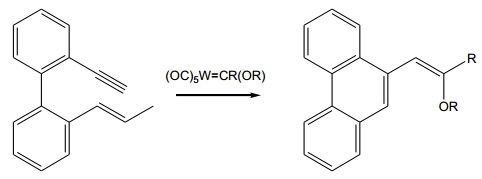Question 1: Propose a method for:

Question 2: In principle, cyclopentene might metathesise to 1,6-cyclodecadiene (cdd). However, a polymer is formed. What is the structure of the polymer, and how does its formation, instead of that of cdd, relate to the question of pairwise versus non-pairwise mechanisms?
Question 3: In some TiCl3-based polymerization catalysts, a small amount of NiCl2 is added to shorten the chain length of the polymer. What is the role of the Ni? What is the structure of the end group when the polymer dissociates from the Ni-doped catalyst? What may be the effect of the additives FeCl3, HgCl2 and VCl5?
Question 4: Two chemically inequivalent hydrides, HA and HB, in a metal dihydride complex at 50°C, resonate at δ –5 and –10 ppm, respectively and are exchanging so that each resonance exhibits an initial broadening of 10 Hz at a field corresponding to 500 MHz. Find out the rate of exchange? At 80°C we observe coalescence; find out the new rate of exchange?
Question 5: Allyl complexes are characteristically fluxional, the principle pathway being an η3–η1–η3 process. Explain this process, and sketch the 1H spectra for the low and high T limits of the complex.